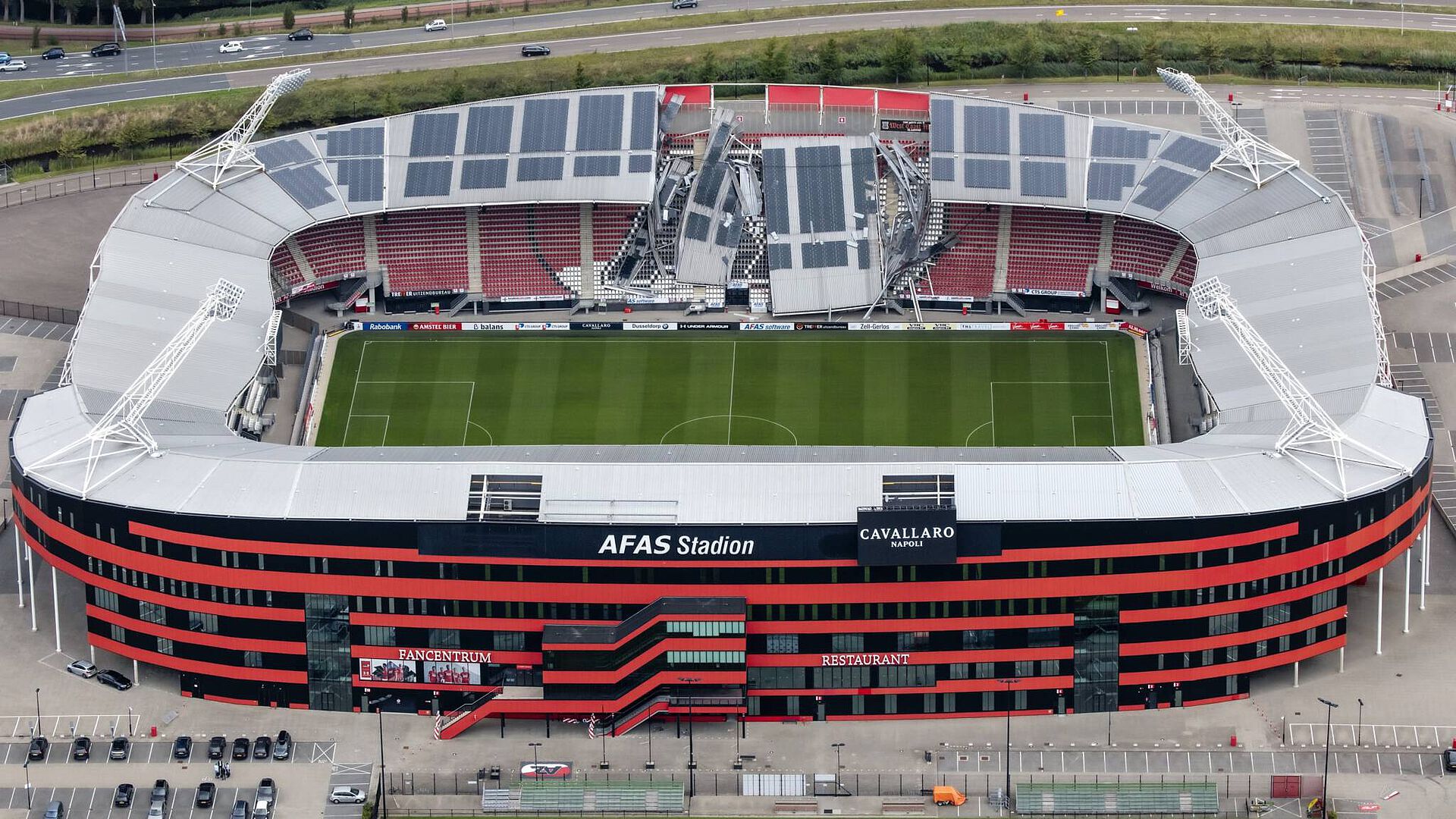

On 10. August 2019 part of the roof structure of the AFAS Stadium in Alkmaar (The Netherlands) collapsed. At the time of the incident the stadium was empty which meant that thankfully there were no victims. Preliminary conclusions drawn by the Dutch Safety Board and engineering firm Royal HaskoningDHV point out that the collapse was caused by a combination of engineering errors, faulty welds and downward wind load during a storm. (Photo: © NOS)
Investigation by the Dutch current affairs TV program Nieuwsuur made clear that after construction of the AFAS Stadium, no detailed in-service inspections of the state of the steel structure were carried out for more than 13 years. The current legal framework doesn’t provide requirements for such inspections. Checks are limited to visual evaluation by officials of the Construction and Housing Oversight Department of the municipality in which the stadium is located.
The Nieuwsuur report interviews stadium safety expert Frank Wijnveld. He insists the Dutch authorities take appropriate action as soon as possible because recent events show the risks involved. He mentions the example of the Sports Grounds Safety Authority in the UK which is in charge of safety of stadiums and similar sports and event venues. Contrary to the Dutch situation, this British Authority commissions periodic examinations and inspections which allows for constant monitoring of the structural safety. Wico Ankersmit of the Dutch Association for Construction and Housing Oversight also advocates a periodic general inspection for stadiums.
Watch the Nieuwsuur report (Dutch):
The majority of roof structures of stadiums and similar venues such as concert halls are a large steel structure which consists of numerous frames and tubes that are put together using welding and or bolts. Because these structures are located mainly above the grandstands or are part of them, it usually isn’t feasible to use scaffolding or cherry pickers. Furthermore, the structure is coated to protect it against corrosion, which makes visual inspection of the welds impossible. In these regards, such a structures is similar to bridges, amusement park attractions, cranes and offshore rigs.
MME Group from Ridderkerk (The Netherlands) operates under the slogan “A Longer Life” and has decades of experience in carrying out weld inspections on such objects. Therefore, MME Group is the right partner for both owners and operators of stadiums and research and engineering firms that are contracted to assess their structural safety.
MME Group has a large in-house team of Non-Destructive Testing technicians that are certified according to ISO 9712 and IRATA standards to inspect this kind of steel structures at height and in difficult to reach areas using Rope Access techniques. For inspection of welds underneath the coating so called Eddy Current Testing (ET) is used. This form of magnetic testing makes it possible to detect cracks and other defects in the surface of the welds and the base material directly next to the welds without the need for coating removal.
By contracting MME Group for periodic NDT inspections during the operational life span of stadiums and sports venues, owners and operators gain insight in the exact condition and integrity of the steel structure. This not only allows them to determine whether further action is required, but also shows to society at large that they take the safety of their stadium seriously.